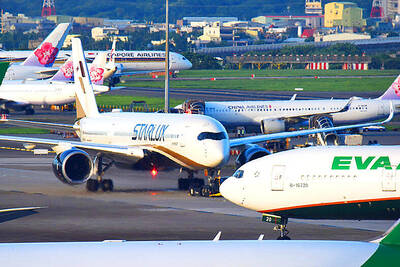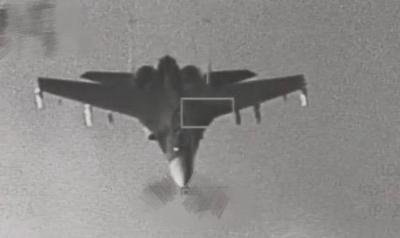The Ministry of National Defense has proposed a NT$1.19 billion (US$39.2 million) budget to increase the pay rate of 29,995 military personnel who were not included in a previous raise for combat troops, a ministry official said.
To boost enlistment and morale, units not included in the 2015 pay raise are to be classified as either “type one” or “type two” combat units, the official said.
The army’s 101st Amphibious Reconnaissance Battalion and the drone-flying squadrons of its Aviation and the Special Forces Command are among the units that are to receive better pay under the new plan, the official said.
The plan has been submitted to the Executive Yuan as a ministry priority and is to be implemented as soon as January next year if both it and the Legislative Yuan approve the proposal without alteration, the official said.
The previous pay increase for combat troops was implemented on April 1, 2015, but many units continue to experience recruitment shortages, the official said.
The exclusion of many units within brigade-level organizations is believed to be the cause of the problem, the ministry said.
To address the issue, the ministry devised the proposal to incorporate the units that were left out of the original plan, the official said.
Under the proposal, the army’s drone squadrons and the 101st Amphibious Reconnaissance Battalion are to be included in the “type one” classification, increasing members’ pay by NT$5,000 per month, the official said.
Other units to be incorporated as type one include the navy’s 256th Submarine Unit’s support squadron; the Hai Feng Shore-Based Anti-Ship Missile Group squadrons; and the marines’ Amphibious Reconnaissance and Patrol Unit’s reconnaissance teams and underwater demolition team, the official said.
Units within the army’s brigades and corps that did not receive pay raises, such as chemical warfare, communication, electronics and information, engineering, maintenance, sanitation, military police and training, are to be classified as “type two” combat units, increasing the soldiers’ monthly pay by NT$3,000.
The infantry, armor and artillery units organic to the battalion headquarters of the army and the marines are to be reclassified from type two to type one, a ministry official said.
The official said the reclassification of formations from type two to type one would add an estimated NT$62 million to the ministry’s annual budget, which is not included in the NT$1.19 billion figure.

Trips for more than 100,000 international and domestic air travelers could be disrupted as China launches a military exercise around Taiwan today, Taiwan’s Civil Aviation Administration (CAA) said yesterday. The exercise could affect nearly 900 flights scheduled to enter the Taipei Flight Information Region (FIR) during the exercise window, it added. A notice issued by the Chinese Civil Aviation Administration showed there would be seven temporary zones around the Taiwan Strait which would be used for live-fire exercises, lasting from 8am to 6pm today. All aircraft are prohibited from entering during exercise, it says. Taipei FIR has 14 international air routes and

Taiwan lacks effective and cost-efficient armaments to intercept rockets, making the planned “T-Dome” interception system necessary, two experts said on Tuesday. The concerns were raised after China’s military fired two waves of rockets during live-fire drills around Taiwan on Tuesday, part of two-day exercises code-named “Justice Mission 2025.” The first wave involved 17 rockets launched at 9am from Pingtan in China’s Fujian Province, according to Lieutenant General Hsieh Jih-sheng (謝日升) of the Office of the Deputy Chief of the General Staff for Intelligence at the Ministry of National Defense. Those rockets landed 70 nautical miles (129.6km) northeast of Keelung without flying over Taiwan,

City buses in Taipei and New Taipei City, as well as the Taipei MRT, would on Saturday begin accepting QR code payments from five electronic payment providers, the Taipei Department of Transportation said yesterday. The new option would allow passengers to use the “transportation QR code” feature from EasyWallet, iPass Money, iCash Pay, Jkopay or PXPay Plus. Passengers should open their preferred electronic payment app, select the “transportation code” — not the regular payment code — unlock it, and scan the code at ticket readers or gates, General Planning Division Director-General Liu Kuo-chu (劉國著) said. People should move through the

The Ministry of National Defense (MND) today released images of the military tracking China’s People's Liberation Army (PLA) movements during the latest round of Chinese drills around Taiwan. The PLA began "Justice Mission 2025" drills today, carrying out live-fire drills, simulated strikes on land and maritime targets, and exercises to blockade the nation's main ports. The exercises are to continue tomorrow, with the PLA announcing sea and air space restrictions for five zones around Taiwan for 10 hours starting from 8:30am. The ministry today released images showing a Chinese J-16 fighter jet tracked by a F-16V Block 20 jet and the